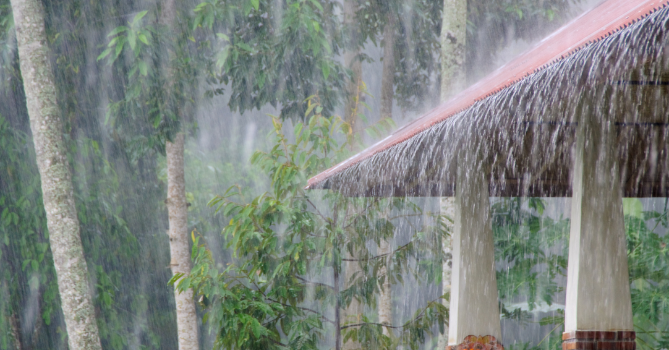.png)
Eco-Conscious Construction: Transforming Real Estate Practices
In today's fast-paced world, sustainability has become a key focus in real estate development. From reducing carbon footprints to enhancing energy efficiency, the drive for sustainability is reshaping the way we build and manage our cities. In this comprehensive guide, we will delve into the realm of sustainable real estate, exploring the strategies, technologies, and innovations that are paving the way for a greener future. By understanding the principles of sustainable design and planning, we can unlock the potential to create healthier, more resilient communities while preserving our planet for future generations. Join us as we embark on a journey to explore the intersection of sustainability and real estate, and discover how together, we can build a brighter, more sustainable future.
Sustainable real estate is an approach to property development that prioritizes environmental, social, and economic considerations to minimize negative impacts on the planet and society. At its core, sustainable real estate aims to create buildings and communities that are environmentally responsible, socially equitable, and economically viable over the long term.
One key aspect of sustainable real estate is energy efficiency. This involves designing buildings to consume less energy through efficient heating, cooling, lighting, and insulation systems. By reducing energy consumption, sustainable buildings not only lower operating costs but also decrease greenhouse gas emissions, helping combat climate change.
Another important aspect is resource conservation. Sustainable real estate focuses on using renewable materials and reducing waste throughout the construction process. This includes incorporating recycled materials, responsibly sourcing wood and other resources, and implementing waste management strategies to minimize landfill waste.
In addition to environmental considerations, sustainable real estate also emphasizes social equity and community well-being. This includes creating accessible and inclusive spaces, promoting public transportation and walkability, and fostering a sense of community through shared amenities and green spaces.
Overall, sustainable real estate seeks to balance the needs of people, planet, and profit, creating developments that are environmentally sound, socially responsible, and economically viable. By embracing sustainable practices in real estate development, we can create healthier, more resilient communities while safeguarding the planet for future generations.
Planning for sustainability in real estate development involves carefully considering the environmental, social, and economic impacts of a project from the outset. It requires thoughtful analysis, strategic decision-making, and collaboration among stakeholders to create developments that are both sustainable and successful in the long term.
One key aspect of planning for sustainability is site selection. Choosing the right location can minimize environmental impact, maximize access to public transportation, and enhance the overall quality of life for residents. Sustainable site selection considers factors such as proximity to amenities, availability of green space, and potential for redevelopment of brownfield sites.
Another important consideration is land use planning. Sustainable real estate development seeks to optimize land use while preserving natural habitats and minimizing urban sprawl. This involves zoning regulations, mixed-use development, and smart growth strategies to create vibrant, walkable communities that promote social interaction and reduce reliance on cars.
In addition, sustainable planning involves incorporating green building practices into the design and construction process. This includes using energy-efficient materials, implementing passive design strategies to optimize natural light and ventilation, and integrating renewable energy systems such as solar panels and geothermal heating.
Furthermore, sustainable planning emphasizes water conservation and management. This includes designing buildings with low-flow fixtures, implementing rainwater harvesting systems, and creating permeable surfaces to reduce stormwater runoff and replenish groundwater supplies.

Community engagement is also a crucial aspect of sustainable planning. Involving local residents and stakeholders in the planning process ensures that development projects meet the needs of the community and reflect its values and aspirations. This can include hosting public meetings, conducting surveys, and establishing advisory committees to gather input and feedback from diverse perspectives.
Overall, sustainable planning in real estate development requires a holistic approach that balances environmental, social, and economic considerations. By incorporating sustainability principles into the planning process, developers can create projects that are not only environmentally responsible but also economically viable and socially beneficial for the communities they serve.
Designing sustainable spaces is essential for creating real estate developments that minimize environmental impact, promote occupant well-being, and contribute to long-term resilience. Sustainable design principles integrate environmental considerations into every stage of the design process, from concept development to construction and operation.
One key aspect of sustainable design is energy efficiency. Buildings account for a significant portion of global energy consumption and greenhouse gas emissions, so designing energy-efficient spaces is critical for reducing environmental impact. Sustainable design strategies include incorporating passive solar design, optimizing building orientation for natural light and ventilation, and using high-performance insulation and windows to minimize energy loss.
Another important consideration in sustainable design is material selection. Choosing environmentally friendly materials, such as recycled or renewable resources, helps reduce the carbon footprint of construction projects and minimizes waste. Additionally, selecting materials with low emissions of volatile organic compounds (VOCs) contributes to better indoor air quality and occupant health.
Water conservation is also a key aspect of sustainable design. Designing buildings with water-efficient fixtures and incorporating rainwater harvesting and graywater recycling systems helps reduce water consumption and minimize strain on local water resources. Additionally, using drought-tolerant landscaping and permeable paving materials can help manage stormwater runoff and replenish groundwater supplies.

Furthermore, sustainable design prioritizes occupant comfort and well-being. This includes creating spaces that optimize natural light, provide access to outdoor views, and promote thermal comfort through proper insulation and ventilation. Incorporating biophilic design elements, such as green roofs and indoor plants, can also enhance occupant productivity, creativity, and overall satisfaction with the built environment.
Investing in a greener future involves making financial commitments to sustainable real estate projects that prioritize environmental responsibility and long-term resilience. These investments play a crucial role in driving the transition towards more sustainable development practices and mitigating the environmental impact of the built environment.
One way to invest in a greener future is through financing sustainable real estate developments. This includes providing funding for projects that incorporate sustainable design features, energy-efficient technologies, and renewable energy systems. By supporting these initiatives, investors can help accelerate the adoption of green building practices and contribute to the reduction of greenhouse gas emissions.
Another avenue for investment is through the development of sustainable infrastructure. This includes investing in projects that enhance public transportation systems, promote walkability and cycling, and improve access to green spaces. Sustainable infrastructure investments not only reduce carbon emissions but also enhance the quality of life for communities by creating more livable, resilient, and equitable urban environments.
Additionally, investing in green building certifications, such as LEED (Leadership in Energy and Environmental Design) or WELL Building Standard, demonstrates a commitment to sustainability and helps attract environmentally conscious tenants and buyers. These certifications provide assurance that buildings meet rigorous standards for energy efficiency, indoor air quality, and occupant health and well-being.
Furthermore, investing in sustainable real estate funds or green bonds allows investors to support a portfolio of environmentally responsible projects while diversifying their investment portfolios. These investment vehicles offer opportunities to earn competitive financial returns while making a positive impact on the environment and society.
In conclusion, sustainable real estate offers a promising pathway towards building a greener future for generations to come. Through careful planning, innovative design, and strategic investment, we can create built environments that minimize environmental impact, enhance resilience, and promote human well-being. By prioritizing sustainability in real estate development, we can address pressing environmental challenges such as climate change, resource depletion, and urbanization, while simultaneously creating vibrant, healthy, and prosperous communities.
As we move forward, it is essential for stakeholders across the real estate industry to collaborate, share knowledge, and implement best practices to accelerate the transition to sustainable development. By working together, we can harness the transformative power of sustainable real estate to create a more resilient, equitable, and sustainable built environment for future generations. Together, we can build a greener future—one sustainable project at a time.